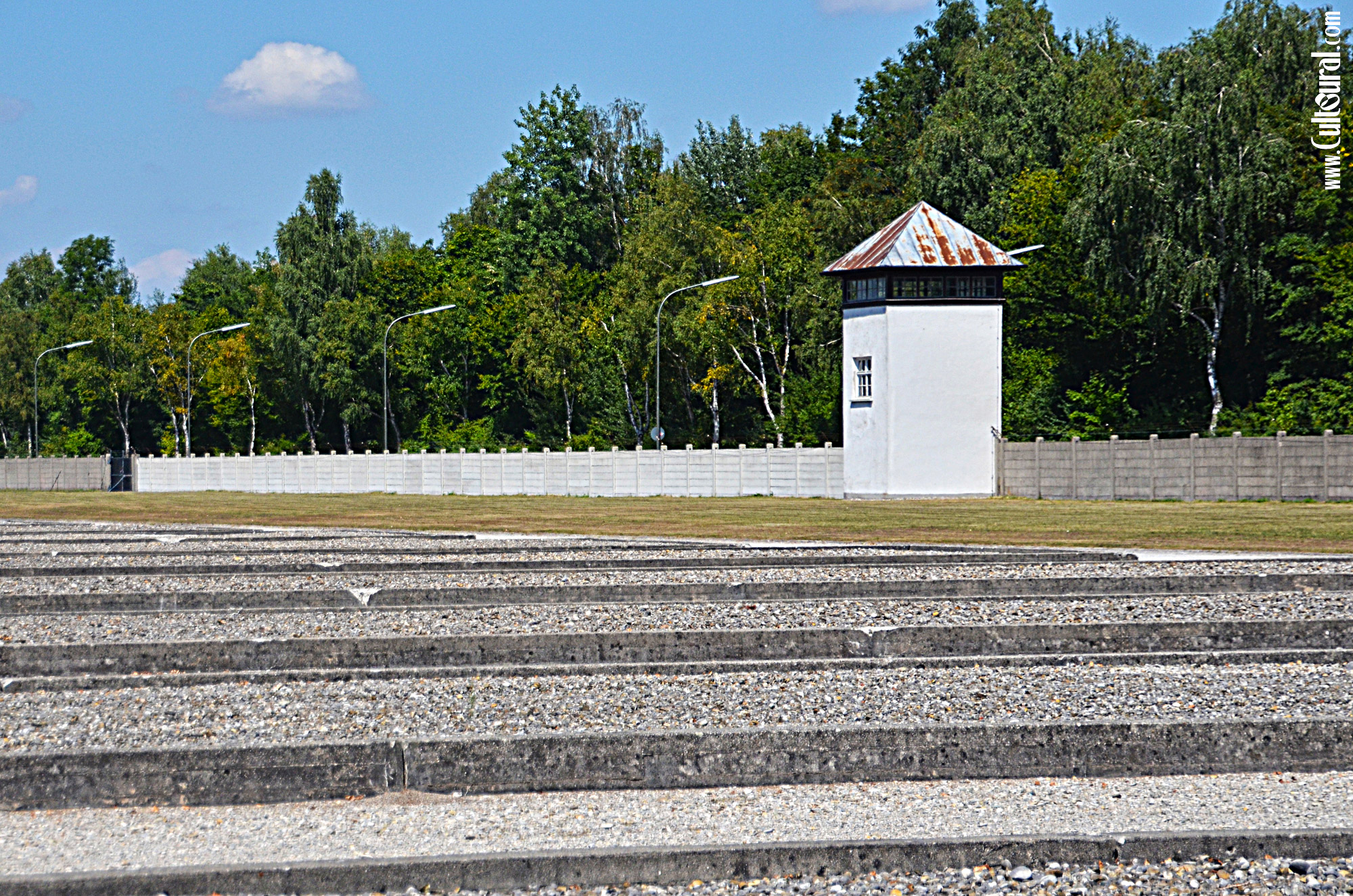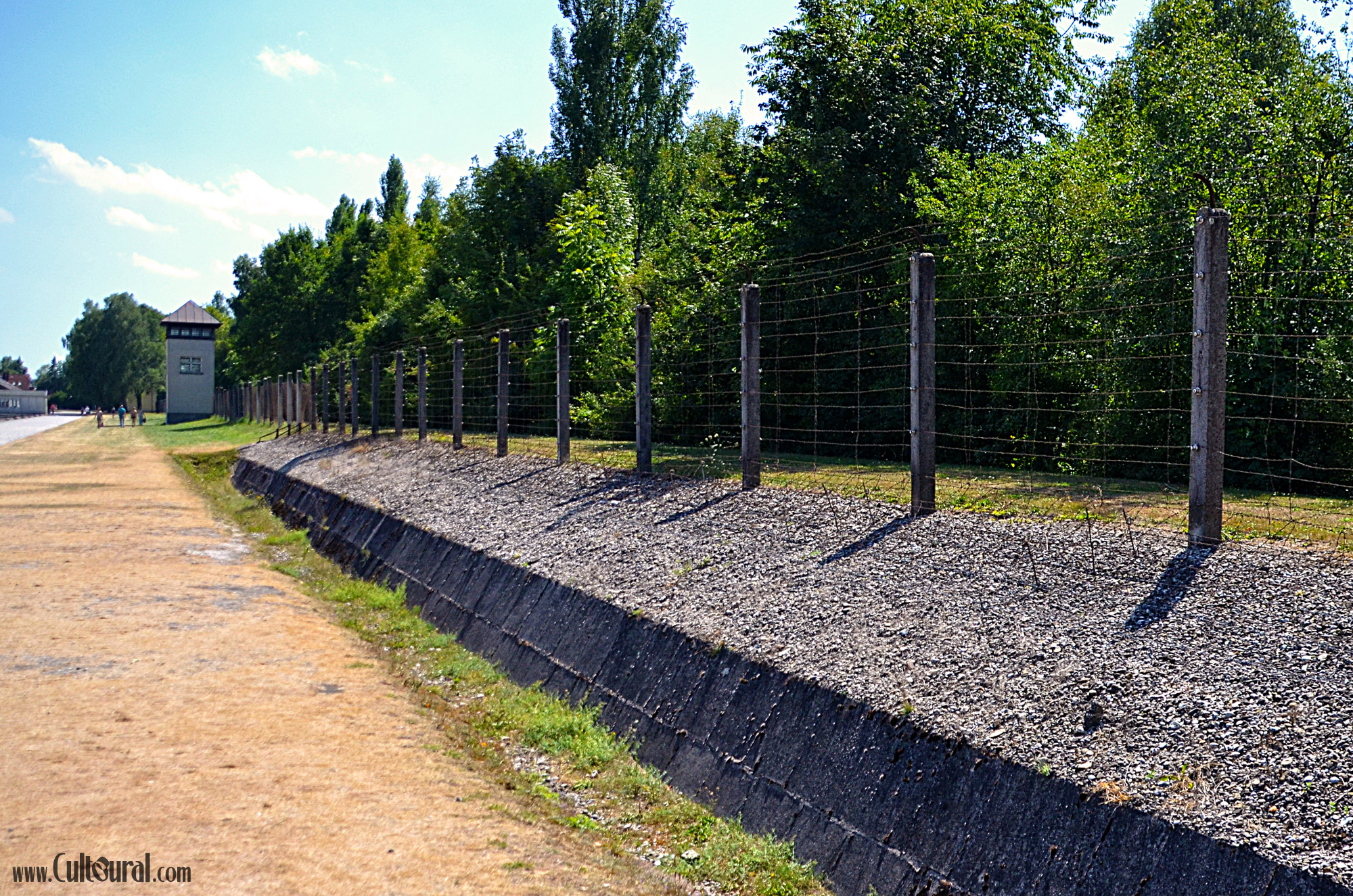‘And there where terror was imposed, conscience is now created’
We have all heard about the concentration camps: one of the most horrific, known and studied systems of oppression in our recent history. Because of the closeness of January 27th, the annual International Commemoration Day in memory of the victims of the Holocaust, we present you the Commemorative Space of Dachau in Germany.
What is the importance of Dachau?
Established in March 1933, this was the first concentration camp (initially created for political prisoners), used as a “school of violence” and role model by the “Schutzstaffel” or “Protection Squadron”. Known as SS, this was the organization responsible for most of the genocidal killing during the Holocaust and the Adolf Hitler Nazi regime. Dachau’s camp system grew to include more than 100 satellite or sub-camps and just like all the other concentration camps: it was not subjected to German law, which allowed ALL kinds of atrocities to happen. During its twelve years (nearly all the Nazi regime) more than 200,000 people from all over Europe were imprisoned there, of these around 41,500 were murdered and the official numbers would have risen, had it not been for the arrival of the troops who, in April 1945, freed the survivors.
Who was sent to these camps?
Communists, religious leaders and believers (specially Jews), criminals, foreigners, functionaries from previous governments, homosexuals and basically anyone who spoke against the regime or who was considered to ‘endanger the security of the state’.
What happened in there?
Once the prisoners entered the facilities, which clearly stated on the gate: “Arbeit macht frei” (“Work shall set you free”), they were stripped from all their possessions (including their clothing), divided into categories and used as slave labor. Brutal medical experiments including hypothermia, reviving attempts and altitude tests took place among the facilities which conditions were beneath human dignity, not only because of the poor sanitation, but also for the fact of being constantly overcrowded.
While those inmates that were deemed unfit were killed by poison gas, many others died of malnutrition, diseases, overwork or were executed in the courtyard to set the example. Many committed suicide, either by defying the authority of their oppressors, entering ‘forbidden areas’ or throwing themselves to the electrical fence and therefore having an ‘instant death’.
In those lands where so much blood was spilled and souls were broken, there is since 1965 a commemorative space with a museographic exhibition that illustrates the history and composition of the Dachau concentration camp and that guides its visitors through the “prisoner’s path”. Its objective is to preserve the evidence of the crimes of the National Socialism, to keep alive the memory of the victims’ suffering and to use these spaces as places of learning for the future generations.
What can you expect from a visit to Dachau?
The visit allows you to get to know the bunker or old prison of the camp, the barracks, the crematory areas and the facilities / security measures that were taken in the complex, as well as exhibitions (both temporary and permanent) and of course, the horrific entrance and reception process of the prisoners.
What is recommended before going?
The most important thing is to prepare yourself emotionally because the details that are learned and illustrated during the journey are horrible and highly shocking. If you are going with a group it is recommended to check in advance the possibility of having a private guide and, whatever the case may be, it is preferable that you try to study the subject, even if minimally, to better understand its context. Given the nature of this place we also suggest to make your actions pay respect to the victims and a good way to do it is, for example, to avoid making cruel jokes or taking smiley ‘selfies’.
From Cultoural.com we invite you to learn about this dark chapter of the past, so we can avoid its repetition in the future. In case you can not go physically you can do the Virtual Tour via: https://www.kz-gedenkstaette-dachau.de/virtual_tour.html
Photos: © 2018. Maricha Martínez Sosa / Roland Liebetrau.
Dachau: más que un campo de concentración, una escuela Nazi de violencia.
‘Y allí donde se impuso el terror, ahora se crea conciencia’
Todos hemos oído hablar de los campos de concentración: uno de los más horrorosos, conocidos y estudiados sistemas de opresión de nuestra historia reciente. Debido a la cercanía del 27 de enero, Día de Conmemoración Internacional anual en memoria de las víctimas del Holocausto, les presentamos el Espacio Conmemorativo de Dachau en Alemania.
¿Cuál es la importancia de Dachau?
Establecido en marzo de 1933, este fue el primer campo de concentración (inicialmente creado para presos políticos), utilizado como una “escuela de violencia” y modelo a seguir por el “Schutzstaffel” o “Escuadrón de Protección”. Conocida como SS, esta fue la organización responsable de la mayoría de los asesinatos genocidas durante el Holocausto y el régimen nazi de Adolf Hitler. El sistema de campamento de Dachau creció para incluir más 100 satélites o subcampos y al igual que todos los demás campos de concentración: no estaba sujeto a la ley alemana, lo que permitió que allí ocurrieran TODO tipo de atrocidades. Durante sus doce años (casi todo el régimen nazi) más de 200,000 personas de toda Europa fueron encarceladas allí y en sus campos subsidiarios, de los cuales alrededor de 41,500 fueron asesinados y estos números oficiales habrían aumentado, de no haber sido por la llegada de las tropas que, en abril de 1945, liberaron a los sobrevivientes.
¿Quiénes eran enviados a estos campos?
Comunistas, líderes y creyentes religiosos (especialmente judíos), criminales, extranjeros , funcionarios de gobiernos anteriores, homosexuales y básicamente cualquiera que hablara en contra del régimen o que se considerara que “ponía en peligro la seguridad del Estado”.
¿Qué sucedía allí?
Una vez que los prisioneros eran ingresados en las instalaciones, que claramente indicaban en la puerta: “Arbeit macht frei” (“El trabajo les hará libres”), eran despojados de todas sus posesiones (incluida su ropa), divididos en categorías y utilizados como mano de obra esclava. Experimentos médicos brutales que incluyeron hipotermia, intentos de reanimación y pruebas de altitud tuvieron lugar en las instalaciones, cuyas condiciones estaban por debajo de lo aceptable para la dignidad humana, no solo por la falta de saneamiento, sino también por el hecho de estar constantemente superpobladas.
Mientras los presos que eran consideraros no aptos eran asesinados vía gas venenoso, muchos otros murieron por desnutrición, enfermedades, exceso de trabajo o fueron ejecutados en el patio para dar el ejemplo. Muchos se suicidaron desafiando la autoridad de sus opresores, entrando en “áreas prohibidas” o arrojándose a la valla eléctrica y por lo tanto teniendo una “muerte instantánea”.
En aquellos terrenos donde tanta sangre se derramó y tantas almas fueron rotas, existe desde 1965 un espacio conmemorativo con una exposición museográfica que ilustra la historia y la composición del campo de concentración de Dachau y que guía a sus visitantes a través del “camino del prisionero”. Su objetivo es preservar la evidencia de los crímenes del nacionalsocialismo, mantener vivo el recuerdo del sufrimiento de las víctimas y utilizar estos espacios como lugares de aprendizaje para las generaciones futuras.
¿Qué se puede esperar de una visita a Dachau?
La visita te permite conocer el búnker o la antigua prisión del campo, los cuarteles, las áreas de crematorios y las instalaciones / medidas de seguridad que se tomaban en el complejo, así como exposiciones (tanto temporales como permanentes) y, por supuesto, el escalofriante proceso de entrada y recepción de los prisioneros.
¿Qué se recomienda antes de ir?
Lo más importante es prepararse emocionalmente pues son horribles y altamente impactantes los detalles que se aprenden e ilustran durante el recorrido. Si vas a ir con un grupo, se recomienda verificar con anticipación la posibilidad de tener un guía privado y, sea cual sea el caso, es preferible que intentes estudiar el tema, aunque sea mínimamente, para comprender mejor su contexto. Dada la naturaleza de este lugar, también sugerimos que tus acciones rindan respeto a las víctimas y una buena forma de hacerlo es, por ejemplo, evitar hacer bromas crueles o tomar ‘selfies’ sonrientes.
Desde Cultoural.com te invitamos a aprender sobre este oscuro capítulo del pasado, para evitar su repetición en el futuro. Y, en caso de que no puedas ir físicamente, puedes hacer el recorrido virtual a través de: https://www.kz-gedenkstaette-dachau.de/virtual_tour.html
Fotos: © 2018. Maricha Martínez Sosa / Roland Liebetrau.







